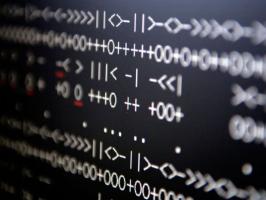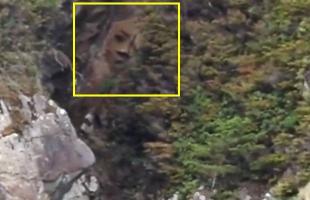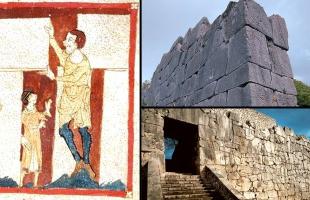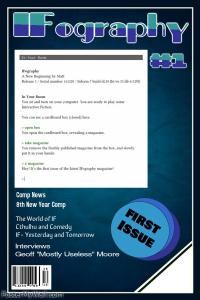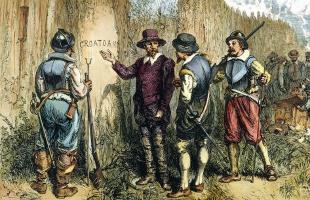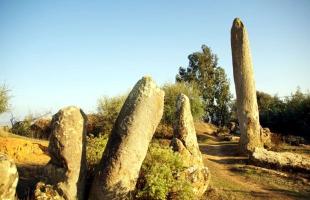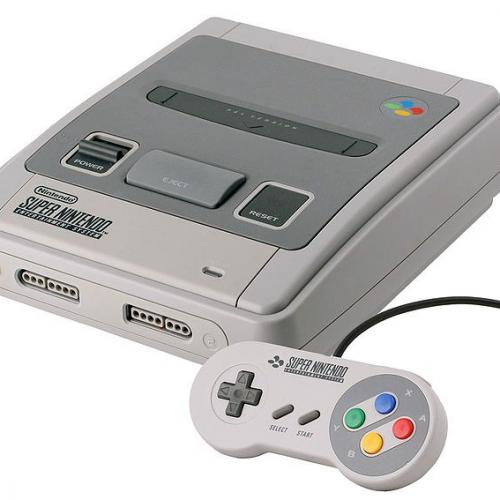Copy Link
Add to Bookmark
Report
Public-Access Computer Systems Review Volume 05 Number 01

+ Page 1 +
-----------------------------------------------------------------
The Public-Access Computer Systems Review
Volume 5, Number 1 (1994) ISSN 1048-6542
-----------------------------------------------------------------
To retrieve an article file as an e-mail message, send the GET
command given after the article information to
listserv@uhupvm1.uh.edu. To retrieve the article as a file, omit
"F=MAIL" from the end of the GET command.
CONTENTS
COMMUNICATIONS
The Mann Library Gateway System
By Martin L. Schlabach and Susan J. Barnes (pp. 5-19)
To retrieve this file: GET SCHLABAC PRV5N1 F=MAIL
The Albert R. Mann Library at Cornell University has built an
electronic library, called the Mann Library Gateway, that brings
computerized indexes to journal articles, numeric data files, and
the full text of journal articles and reference works to users'
workstations. Currently, there are over 30 titles in the
database list. Most of the titles are individual resources, but
some of the titles identify systems that provide access to
multiple databases. In total, close to 200 databases are
available to the Cornell community through the Gateway.
COLUMNS
Casting the Net
You Can't Get There From Here: E-prints and the Library
By Priscilla Caplan (pp. 20-24)
To retrieve this file: GET CAPLAN PRV5N1 F=MAIL
The paper preprint is well on its way to extinction, supplanted
in the information ecosystem by the electronic preprint, or
e-print. How will libraries cope?
+ Page 2 +
-----------------------------------------------------------------
The Public-Access Computer Systems Review
-----------------------------------------------------------------
Editor-in-Chief
Charles W. Bailey, Jr.
University Libraries
University of Houston
Houston, TX 77204-2091
(713) 743-9804
Internet: lib3@uhupvm1.uh.edu
Associate Editors
Columns: Leslie Pearse, OCLC
Communications: Dana Rooks, University of Houston
Editorial Board
Ralph Alberico, University of Texas, Austin
George H. Brett II, Clearinghouse for Networked Information
Discovery and Retrieval
Steve Cisler, Apple Computer, Inc.
Walt Crawford, Research Libraries Group
Lorcan Dempsey, University of Bath
Nancy Evans, Pennsylvania State University, Ogontz
Charles Hildreth, READ, Ltd.
Ronald Larsen, University of Maryland
Clifford Lynch, Division of Library Automation,
University of California
David R. McDonald, Tufts University
R. Bruce Miller, University of California, San Diego
Paul Evan Peters, Coalition for Networked Information
Mike Ridley, University of Waterloo
Peggy Seiden, Skidmore College
Peter Stone, University of Sussex
John E. Ulmschneider, North Carolina State University
+ Page 3 +
Technical Support
Tahereh Jafari, Information Technology Division, University of
Houston
Publication Information
Published on an irregular basis by the University Libraries,
University of Houston. Circulation: 8,156 subscribers in 67
countries (PACS-L) and 2,338 subscribers in 51 countries (PACS-
P).
Back issues are available from listserv@uhupvm1.uh.edu. To
retrieve a cumulative index to the journal, send the following e-
mail message to the list server: GET INDEX PR F=MAIL.
Back issues are also available from the University of
Houston Libraries' Gopher server. Point your Gopher client at
info.lib.uh.edu, port 70, and follow this menu path:
Looking for Articles
Electronic Journals
University of Houston Libraries E-Journals
The Public-Access Computer Systems Review
The journal's URL is gopher://info.lib.uh.edu:70/11/articles/e-
journals/uhlibrary/pacsreview.
The first three volumes of The Public-Access Computer
Systems Review are also available in book form from the American
Library Association's Library and Information Technology
Association (LITA). The price of each volume is $17 for LITA
members and $20 for non-LITA members. All three volumes can be
ordered as a set for $45 (indicate that you want the PACS Review
set, order number 7712-X). To order, contact: ALA Publishing
Services, Order Department, 50 East Huron Street, Chicago, IL
60611-2729, (800) 545-2433.
+ Page 4 +
-----------------------------------------------------------------
The Public-Access Computer Systems Review is an electronic
journal that is distributed on the Internet and on other computer
networks. There is no subscription fee.
To subscribe, send an e-mail message to
listserv@uhupvm1.uh.edu that says: SUBSCRIBE PACS-P First Name
Last Name. PACS-P subscribers also receive three electronic
newsletters: Current Cites, LITA Newsletter, and Public-Access
Computer Systems News.
The Public-Access Computer Systems Review is Copyright (C)
1994 by the University Libraries, University of Houston. All
Rights Reserved.
Copying is permitted for noncommercial use by academic
computer centers, computer conferences, individual scholars, and
libraries. Libraries are authorized to add the journal to their
collection, in electronic or printed form, at no charge. This
message must appear on all copied material. All commercial use
requires permission.
-----------------------------------------------------------------
+ Page 20 +
-----------------------------------------------------------------
Casting the Net
-----------------------------------------------------------------
-----------------------------------------------------------------
Caplan, Priscilla. "You Can't Get There From Here: E-prints and
the Library." The Public-Access Computer Systems Review 5, no. 1
(1994): 20-24. To retrieve this file, send the following e-mail
message to listserv@uhupvm1.uh.edu: GET CAPLAN PRV5N1 F=MAIL.
(The file is also available from the University of Houston
Libraries' Gopher server: info.lib.uh.edu, port 70.)
-----------------------------------------------------------------
A Useful Analogy
Are you sufficiently recovered from all that eggnog for a little
post-holiday fantasy? Imagine it's a few weeks before Christmas,
you've picked out the perfect tree and you ask the attendant at
the tree lot what you owe. "Not a penny," he says, waving his
ax. "Every tree here is free until Christmas, as long as you take
it home yourself. On the other hand, if you want to wait until
the day after Christmas, I'll deliver one right to your house for
a hundred bucks even."
"A hundred dollars," you exclaim, "that's ridiculous! And
what good is a Christmas tree the day after Christmas?" The tree
man shrugs. "That's the way it is," he says. "Make up your
mind." "Well," you say, "I guess I'll call for delivery around
the end of the month. That is, if I have any cash left after
Christmas."
The Preprint Culture
This may not be a perfect analogy with libraries and preprints,
but it's too close for comfort. In several areas of research,
most notably high-energy physics, preprints have for some time
been the dominant means of communicating research results.
Distribution of the preprint (a manuscript ready for submission
to a journal or a conference) was inherently haphazard.
Researchers had to be well plugged in to the distribution
channels of their fields and proactive in seeking out preprints
of interest. Nonetheless, the value of such timely information
was so great that researchers organized the flow of information
on their own, to the extent that D. Dallman et al. could claim
"there has developed a veritable 'Preprint Culture' with its own
social structure." [1]
+ Page 21 +
Some libraries collect paper preprints. The Physics
Research Library at Harvard University, for example, has a large
collection of preprints that are fully cataloged in a special
database in Harvard's online catalog. For the most part,
however, libraries have tended to leave preprints to the
researcher, while subscribing to the printed journals and
proceedings that eventually publish them as articles. Of course,
these publications are expensive and come out too late for the
information to be really useful, hence the development of the
preprint culture to begin with.
E-prints
In fact, the paper preprint is well on its way to extinction,
supplanted in the information ecosystem by the electronic
preprint, or e-print. David Mermin claims, "Nobody in the field
sends out paper preprints anymore." [2] And for good reason.
E-prints can be centralized on one or a small number of servers
and made available to everyone instantly and simultaneously. For
the author, the act of loading a single e-print replaces the
photocopying and distribution of hundreds of copies of a
preprint. And e-print servers can make comments by other
researchers available alongside the original e-print, for rapid
feedback and quality control.
The most basic method of e-print distribution is via
bulletin boards (e-mail). In the most mature areas, the same
e-prints are made available through multiple channels including
e-mail, FTP, and Gopher or World-Wide Web servers. The process
of receiving, revising, and replacing submissions has been
automated by software developed by Paul Ginsparg of LANL, whose
programs can extract bibliographic information and abstracts for
automatic indexing from documents submitted in a standard format.
E-prints can be made available in multiple formats. The
International Philosophical Preprint Exchange mounts e-prints in
vanilla ASCII, several word processing formats, PostScript,
various flavors of TeX, SGML, troff, and Mac binhex formats. In
math and physics, variations on TeX (e.g., LaTeX, AMS-TeX, and
Phyzzx) are standard. Often abstracts and readers' comments are
provided in simple ASCII format and the e-print itself in at
least two formats, ASCII and some type of TeX.
+ Page 22 +
Providing Access to E-prints
Clearly, the rise of the e-print has made it easier for libraries
to provide access to these important research materials.
However, to my knowledge, few libraries feel responsible for
supporting e-prints or facilitating access to them. I put out a
query last fall on PACS-L and CWIS-L asking what libraries were
doing in regard to e-prints and what problems they were
encountering. I received several helpful pointers to e-print
servers, but not a single response from a library doing
something.
The organized access that does exist seems to be provided by
campus Gophers that maintain some sort of subject structure or
that point to other Gophers that do. Using these Gophers is
often (although not always) an ordeal. For example, one Gopher
server I looked at recently has a menu of "Internet Resources by
Subject." Selecting "Math, Natural Sciences" gave me a second
menu with the item "Math, Computing." Selecting this in turn
gave me a menu that included one item offering direct access to
e-prints in algebraic geometry and a second item called
"Mathematics (combined menu, Rice)." Selecting Rice gave me a
menu with an entry for the American Mathematical Society's Gopher
server. The AMS server showed an item for "Math preprints." One
of the documents available under "Math preprints" was an article
called "E-prints in Mathematics" that listed a number of
different bulletin boards with math-related e-prints. As Dave
Barry says, "I am not making this up."
The Library's Role
Many libraries sponsor courses in or offer some end-user support
for common software for navigating the Internet, for formatting
bibliographies from downloaded citations, and the like. I don't
know of any library offering similar assistance in TeX, the
language of e-prints. Nor do I know of any library archiving
e-print collections, which is in fact a thorny area. On the one
hand, there is certainly a need. Most of those running e-print
services do not feel responsible for permanent archival storage
of the e-prints. Although most e-prints do end up published in
more traditional media, some do not, and some are published with
changes. The e-print itself is as likely (in some areas, more
likely) to be cited as its published version.
+ Page 23 +
On the other hand, there are problems peculiar to e-prints.
Older e-prints are irregularly weeded, making the logistics of
archiving difficult. More importantly, copyright generally
passes from the author to the journal publisher on publication,
and some publishers request that e-prints be made inaccessible at
that time. This particular problem may not be solved until
collections of e-prints replace publication in commercial,
refereed journals altogether.
Call to Action
David Mermin thinks the hour is close at hand, at least for
physicists. It has been said that members of the "preprint
culture" are less wedded to publication in traditional journals
for their academic awards than scholars in other disciplines, so
one major barrier may be breachable. The researchers must still
decide how to provide the function of peer review within this
context. Librarians must determine how to guarantee
bibliographic control, end-user support, permanent archives, and
access to both current and archived material.
Still, if there were ever a chance to break the stranglehold
of skyrocketing science serial subscription prices, this may be
it. So with all our attention to e-journals and various other
Internet resources, let's not leave e-prints abandoned by the
electronic roadside, along with last year's Christmas trees.
Notes
1. D. Dallman, M. Draper, and S. Schwarz, "Electronic
Pre-Publishing for World-wide Access: the Case of High Energy
Physics" (Preprint submitted to Interlending and Document Supply,
British Library Document Supply Centre, Boston Spa, UK).
2. David Mermin, "What's Wrong in Computopia?" Physics Today 45
(April 1992): 9.
About the Author
Priscilla Caplan, Assistant Director for Library Systems,
University of Chicago Library, 1100 E. 57th Street, Chicago, IL
60637. Internet: p-caplan@uchicago.edu.
+ Page 24 +
-----------------------------------------------------------------
The Public-Access Computer Systems Review is an electronic
journal that is distributed on the Internet and on other computer
networks. There is no subscription fee.
To subscribe, send an e-mail message to
listserv@uhupvm1.uh.edu that says: SUBSCRIBE PACS-P First Name
Last Name. PACS-P subscribers also receive three electronic
newsletters: Current Cites, LITA Newsletter, and Public-Access
Computer Systems News.
This article is Copyright (C) 1994 by Priscilla Caplan. All
Rights Reserved.
The Public-Access Computer Systems Review is Copyright (C)
1994 by the University Libraries, University of Houston. All
Rights Reserved.
Copying is permitted for noncommercial use by academic
computer centers, computer conferences, individual scholars, and
libraries. Libraries are authorized to add the journal to their
collection, in electronic or printed form, at no charge. This
message must appear on all copied material. All commercial use
requires permission.
-----------------------------------------------------------------
+ Page 5 +
-----------------------------------------------------------------
Schlabach, Martin L., and Susan J. Barnes. "The Mann Library
Gateway System." The Public-Access Computer Systems Review 5,
no. 1 (1994): 5-19. To retrieve this file, send the following e-
mail message to listserv@uhupvm1.uh.edu: GET SCHLABAC PRV5N1
F=MAIL. (The file is also available from the University of
Houston Libraries' Gopher server: info.lib.uh.edu, port 70.)
-----------------------------------------------------------------
1.0 Introduction
The Albert R. Mann Library at Cornell University has built an
electronic library that brings computerized indexes to journal
articles, numeric data files, and the full text of journal
articles and reference works to users' workstations. This
system, known as the Mann Library Gateway, is used on the Cornell
campus at libraries, offices, labs, and microcomputer centers.
It is also used off-campus by Cornellians who are working at home
or traveling. The Gateway system has been very well received and
has grown steadily in usage and size over the past two years.
2.0 Gateway Description
The Gateway is a computer system that manages multiple
connections to a variety of carefully selected electronic
information resources. These resources may either reside on
library computers or be located on computers across the country.
By browsing a list of titles and the accompanying brief
description for each title, the user identifies relevant
information resources. Upon selecting a resource from the menu,
the Gateway software completes the connection to the resource.
The location of the information resource as well as the
connection and login processes are transparent to the user.
2.1 Gateway System
The Gateway system currently runs on a Hewlett-Packard Series
9000 computer, but it is designed to run on any UNIX-based
computer system. The system is composed of several software
modules: the administrative module, the "circulation" manager,
and the user interface.
+ Page 6 +
2.1.1 Administrative Module
The administrative module allows staff to create, delete, and
modify all user accounts associated with the Gateway. This
module allows the Gateway administrators to enable or disable
access to each resource for each user. For example, the library
might wish to make a "demo" account available, but deny access to
a particular resource. Limits can also be established on any
resource. For example, licensing restrictions on a bibliographic
database limiting simultaneous access to 100 users can be
enforced.
Individual accounts are created and modified by a member of
the library support staff using a workform interface to the
administrative module. When a large number of accounts need to
be created for a class, the accounts are generated in a more
automated manner by technical staff. "Anonymous" login has also
been established, but such access is limited to sessions
originating on the Cornell campus. This access control provides
the ability to meet the varying contractual requirements of
database producers and vendors.
2.1.2 Circulation Management Module
The "circulation" management module is the entity that actually
enforces the limits set by the administrators. This module also
monitors hardware resources, assuring that no component becomes
overloaded and acceptable response times are maintained. For
example, the management module monitors the number of
simultaneous users connected to each resource, and it can deny
access to additional users if a predetermined limit is reached;
access is again allowed once the number of simultaneous users
drops below the limit.
The system also manages multiple passwords that may be
required for simultaneous access to a resource. For example, if
a remote system requires a unique password for each session and
we have 10 passwords permitting a maximum of 10 simultaneous
sessions, the Gateway circulation manager assigns available
passwords when a user initiates a session to that remote system.
The Gateway "knows" if a password is available or in use, and it
manages the access, thus preventing the individual user from
knowing or using the confidential passwords.
+ Page 7 +
2.1.3 User Interface Module
The third module is the user interface component. Currently, one
version of this module exists. It supports the ANSI 3.64 (VT100)
terminal emulation used by nearly all microcomputer
telecommunications software. This character-based interface was
deliberately chosen as the one interface available to all Mann
Library patrons when the Gateway was created.
The database screen presents the user with the available
resources (see Figure 1). The left half of the database screen
consists of a scrolling title list displaying nine titles at
once. The right half displays a brief description of the one
database highlighted in the title list. The brief description
changes as different titles are highlighted, and it gives the
years of coverage and the frequency of update if the database is
serial in nature. At the bottom of the screen are brief
commands.
-----------------------------------------------------------------
Figure 1. Database Selection Screen
-----------------------------------------------------------------
Mann Library Gateway
Databases __________________ Description___________________
User Guides and Help : BIOSIS is a database of
ABI/Inform : citations and abstracts to
AGRICOLA : the literature on biology,
->BIOSIS : biomedicine, and other
CARL UnCover life sciences.
Census of Population and Housing
CLIMOD Source: BIOSIS Inc.
Cornell Online Catalog Coverage: 1986-present
Crop Estimates-County File Updated: Weekly
(No. 4 of 32 databases available)
Directions ______________________________________________________
Select a database, press RETURN. Press = to move down the list
Use arrow keys - to move up the list
to move through the list. p to change password
Press SHIFT+1st letter of the title q to quit the Gateway
to jump through the list alphabetically.
-----------------------------------------------------------------
+ Page 8 +
Database titles are often cryptic and give no clues about the
nature of the resource. The brief descriptions are of great help
in assisting the new user in identifying the appropriate
database.
2.2 Software Design
As mentioned above, the software system is very modular. This
approach allows the system to evolve piecemeal and to be
eventually distributed over multiple computers. All
administrative functions are currently being handled with a
collection of UNIX Korn shell scripts and Awk programs.
The circulation module mentioned above consists of locally
developed C code. The circulation module links to two other
components that handle resource connections and the user
interface. Resource connections are managed by the Expect
software package, which is readily available from the National
Institute of Standards and Technology. Expect is very flexible
in that it allows the management of many different types of
connections from standard Telnet to FTP and Kermit file
transfers. Finally, the user interface was developed using Liant
Corporation's C-Scape Interface Management System. C-Scape
provides a multiple-window environment within the standard UNIX
terminal environment and provides a growth path to the newer X
Window system.
2.3 Gateway Resources
Currently, there are over 30 titles in the database list. Most
of the titles are individual resources, but some of the titles
identify systems that provide access to multiple databases. In
total, close to 200 databases are available to the Cornell
community through the Gateway.
Although the majority of the databases are bibliographic in
nature, full-text, numeric, and directory databases are also
included. Resources are selected as part of the Mann Library's
collection development process. Selection is made by specialists
in each type, or genre, of information. The decision process is
coordinated by the Head of Collection Development. Decisions
that have significant impact on equipment needs, technical
processing, or provision of service are discussed and reviewed by
the Electronic Resources Council, a committee with
representatives from the Mann Library's Public Services,
Technical Services, and Collection Development divisions, plus a
representative from the Information Technology Section (ITS).
+ Page 9 +
The Mann Library maintains five databases locally under the
BRS/SEARCH software. The databases are, in order of their
addition to the Gateway, Agricola (1982-present), BIOSIS Previews
(1986-present), ERIC (1966-present), ABI Inform (1985-present),
and Periodical Abstracts (1986-present). These databases are
distributed over two DEC Station 5000 servers, requiring over 18
gigabytes of magnetic storage for the databases and their
indexes. The Crop Estimates and the National Resources Inventory
databases are also maintained locally.
In addition, selected tables from the Census of Population
and Housing are available via a Gopher on a Mann Library server.
User guides are also loaded under Gopher and made available
through the Gateway in electronic form.
Other resources available through the Gateway are maintained
elsewhere, and the Gateway software provides connections. The
complete list of resources available as of early 1994 is shown in
Table 1.
+ Page 10 +
-----------------------------------------------------------------
Table 1. Gateway Resources
-----------------------------------------------------------------
ABI/Inform
Agricola
Applied Science & Technology Index
Art Index
Avery Index
Biological & Agricultural Index
BIOSIS Previews
Business Periodicals Index
CARL UnCover
Census of Population and Housing (1990)
CLIMOD (Northeastern Regional Climate Center Database)
Cornell Online Catalog
Crop Estimates
Dialog (150 databases)
Dialog Bluesheets
Dialog Business Connection
Dialog Papers
Engineering Index-EI Page One
ERIC
General Science Index
GEOREF
Humanities Index
Index to Foreign Legal Periodicals
Index to Legal Periodicals
National Resources Inventory
Periodical Abstracts
PsycINFO
Reader's Guide to Periodical Literature
RLIN
Social Science Index
User Guides and Help
Wilson Combined Indexes (includes all Wilson databases in
this list)
-----------------------------------------------------------------
+ Page 11 +
3.0 The Evolution of Electronic Information Services
The Mann Library is the second-largest unit within the Cornell
University Library system. With its collection of over 600,000
printed volumes and almost 500 electronic titles on tape,
magnetic disks, and optical disks, the library is recognized as
one of the most prominent academic agricultural libraries in the
United States. The library serves students, faculty, staff, and
extension personnel in Cornell's College of Agriculture and Life
Sciences, College of Human Ecology, Division of Biological
Sciences, and Division of Nutritional Sciences. As a land grant
library, it also serves the citizens of New York State.
3.1 Early Growth of Mann's Electronic Library
While the printed library collection remains fundamental to the
library's mission to serve Cornellians and New Yorkers, Mann
Library staff have also made providing access to electronic
information a principal goal over the past twenty years. This
access has steadily expanded as information technology advances
have been made. Mediated online searching has been available at
the Mann Library since the early 1970s, end-user access to remote
online databases has been provided since the early 1980s, and
access to databases on CD-ROM has been available since 1987.
Library staff have also provided access to numeric data on tape
and diskette since the early 1980s.
In 1988, library staff began a research project in which the
Agricola database and subsets of the BIOSIS Previews database
were mounted on a local VAX computer. Researchers used these
databases from computers and terminals in locations outside of
the library, and staff investigated whether changes in user
behavior resulted from the availability of this electronic
information. Meanwhile, in a study funded by the U.S. Department
of Education, library staff created an online system to provide
menu-driven interactive access to numeric data. As a result of
these experiments, the library administration decided to make
more databases available to a wider range of users--and Mann
Library's electronic library began to take shape.
+ Page 12 +
3.2 The Birth of the Mann Library Gateway
An early version of the Mann Library Gateway first emerged as a
result of a joint project between the Mann Library and Cornell's
Division of Biological Sciences. Faculty and library staff
agreed that undergraduates in biology classes needed to know how
to use electronic information for their classwork. These skills
would also be essential for graduates in their future jobs.
Staff from the Mann Library and the Division of Biological
Sciences wrote a successful joint proposal to Cornell's
President's Fund for Educational Initiatives to provide hardware,
software, and instruction to provide Biological Sciences
undergraduates with the ability to retrieve information from
databases accessible over the campus network. The databases were
to be delivered through a single point of access, the Gateway.
The development of the Gateway has been a joint effort of
librarians and technical staff at Mann Library (the project team
is described in Section 3.4). The project manager worked with
Biological Sciences faculty and the library's collection
development staff to select the best resources for undergraduates
in biology. Library staff and faculty agreed that BIOSIS
Previews, the premier bibliographic database in the life
sciences, would be the best database to begin with. BIOSIS
Previews is widely recognized among biologists and information
specialists to be a comprehensive, high quality resource.
Faculty judged it a critical electronic resource for
undergraduates. The selection team also recognized that it would
be very useful to faculty, research staff, and graduate students.
The library built on its earlier experience with subsets of
BIOSIS Previews, and it mounted five years of the full database
on a local computer using the BRS/SEARCH software.
The project team decided that biology students and faculty
should also have access to the Cornell Online Catalog, so that
they could easily determine which references found in BIOSIS
Previews would be available on campus. The team also agreed that
other databases in addition to BIOSIS Previews should be provided
to the biology students and faculty, beginning with databases
that the library already had online. These were Agricola and two
numeric files: Crop Estimates and the National Resources
Inventory.
+ Page 13 +
Fundamental to all the project team's work was the belief
that access to these databases must be made very simple. A
single point of access to all resources must be provided.
Although the databases resided on different computers in
different buildings and required different login protocols, these
differences should be transparent to students and faculty. Users
should only be required to learn one computer address and login
protocol. To achieve this goal, the project team created an
interface that presented an easy-to-use menu. This menu listed
Agricola, BIOSIS Previews, the Cornell Online Catalog, National
Resources Inventory, and Crop Estimates. Upon making a selection
from the menu, Telneting and logging in were handled behind the
scenes by the Gateway software. This system was the first
version of the Mann Library Gateway. Soon after this Gateway was
created, the RLIN system was also added to the menu.
Access to this early Gateway system was provided in Spring
1991 to biology students and faculty in campus microcomputer
centers, in Mann Library, and at other networked locations.
Dial-up access via modem was also provided, and it was the most
common means of access outside of the microcomputer centers and
the library. Most faculty and staff did not have connections to
the campus network at this time, and they relied on dial-up
access.
In Fall 1991, library staff and biology instructors
conducted BIOSIS training for over 100 introductory biology
students. These students worked their way through a tutorial and
a searching assignment. In Spring 1992, instruction was expanded
to all 700 introductory biology students. Meanwhile, biology
faculty were using the Gateway for their research and were
planning future instructional uses of BIOSIS Previews and other
databases. Initial instruction for biology faculty and teaching
staff was done by members of the project team. The bulk of the
instruction for undergraduates was provided by biology teaching
assistants. The system and the instruction sessions were
received very favorably.
3.3 Production Version of the Gateway
After the completion of the grant-funded project and the success
of the first version of the Mann Library Gateway, library staff
decided to expand the system to include subject areas beyond
biology and agriculture and to expand the user population beyond
the original biology clientele. At this time, the original grant
project team was disbanded and a new team was formed. This new
group, the Gateway Production Group, was responsible for
maintenance and expansion of the Gateway system.
+ Page 14 +
In Winter 1991-1992, use of the system was opened to all
faculty and students in the colleges and divisions served by the
Mann Library. In 1992, use of the Gateway was opened to all
Cornellians. Use of the system is limited to the Cornell
community at present due to contractual requirements of some
database producers. Access to the system is controlled by
passwords issued at Mann Library.
A "public" version of the Gateway will eventually be
available to anyone. This "public" Gateway will provide access
to all resources except those which must be limited to the use of
Cornellians because of cost or contractual requirements. This
"public" Gateway will enable Mann Library to fulfill its role as
a land grant library in the electronic milieu.
3.4 Project Team
The membership of the project group has varied over the last four
years depending on the focus of Gateway development activities at
the time. Library-wide and campus-wide input has been crucial to
the development of a successful product.
The project team has been coordinated by Marty Schlabach, a
librarian from Public Services. A systems analyst/programmer has
always been a part of the group to provide leadership in Gateway
programming work. In addition, the Head of the Information
Technology Section has been an active participant in the group.
The Head of ITS provides the library- and campus-wide view for
technical discussions, and he brings to the group the authority
to make Mann Library hardware and software decisions. An
Interface Designer joined the Project Team soon after the project
began and has been a key influence in the development of an
easy-to-use system. A part-time Instruction Librarian was hired
to work with faculty to integrate the use of the Gateway and its
electronic resources into courses. The Head of Collection
Development coordinated the process of selecting databases to be
added to the Gateway. Another programmer and the Bibliographic
Files Librarian joined the group as we became more heavily
involved in mounting bibliographic databases locally.
+ Page 15 +
The current Gateway Production Group membership is:
o Marty Schlabach, Gateway Coordinator, Public Services
(Chairperson)
o Bill Fenwick, Programmer, ITS
o Bill Garrison, Interface Designer, ITS
o Tim Lynch, Systems Analyst and Head, ITS
o Oya Rieger, Numeric Files Librarian, Public Services
o Linda Stewart, Bibliographic Files Librarian, Public
Services
4.0 Training
Mann Library staff believe that providing instruction in the use
of electronic information and information technology is a
fundamental role of libraries. Library staff have provided
online searching classes and instruction in the use of software
for over ten years. As the Gateway has been made available,
online searching instruction has evolved from demonstrations of
remote vendors' databases and local CD-ROM searches to hands-on
classroom sessions. The Stone Microcomputer Center at Mann
Library includes a classroom with twenty networked workstations.
In this classroom, users receive instruction in basic and
advanced BRS searching, use of the Dialog Menus software, CARL
UnCover and RLIN searching, and use of numeric data--all
resources available through the Gateway. Almost every session
offers the opportunity for structured hands-on practice with
several trained searchers, who are available to answer user
questions.
The Mann Library provides instruction for classes at the
request of faculty, and it also conducts "open workshops" for any
interested members of the community. BIOSIS Previews instruction
for freshman biology students continues, and it is in its third
year. During the 1992-1993 academic year, library staff taught
over two hundred classes to almost 2,400 users.
+ Page 16 +
5.0 User Support
Mann Library staff provide support to users of the library's
printed and electronic collections. When the Gateway was first
made available to users in 1991, library staff had much more
experience with supporting users of printed materials. The
library administration's goal was to use the reference desk as
the front line of support for electronic library users, just as
it is for users of the traditional print library. Initially,
however, members of the grant project team provided support to
Gateway users. They answered the questions and kept records of
all questions asked and answers provided. These records were
later analyzed so that Gateway support documentation and training
could be provided to reference desk staff.
From the Gateway's earliest days, questions about which
telecommunications software to use, how to connect, how to
correct display problems, how to search, and how to save search
results came in person, via telephone, and through e-mail. Many
questions also came in from people who had forgotten their user
IDs and/or passwords. During the initial months, these questions
were answered by two librarians, a systems analyst, and the
administrative assistant in charge of managing user IDs and
passwords.
In Spring 1992, the front line of support for Gateway users
was moved to the reference desk. Most desk staff were
experienced bibliographic searchers and were easily trained to
answer questions about searching databases available through the
Gateway. Questions regarding logging in and use of
telecommunications software required more training. Workshops
presenting information about telecommunications software were
developed and presented by reference librarians and systems
analysts. Members of the Gateway Production Group prepared an
informational notebook for use by reference desk staff. This
notebook contains handouts explaining use of various databases,
detailed login procedures, and brief guides to major
telecommunication packages used with the Gateway.
At present, most telephone calls and in-person requests for
assistance with the Gateway arrive first at the reference desk.
Most questions are answered at that point. When necessary,
reference staff refer questions to experts on the Mann Library
staff. E-mail requests for assistance arrive at the general e-
mail address for the Reference department, and, when necessary,
are also referred to experts.
+ Page 17 +
In Spring 1993, an online method for distributing Gateway
handouts was developed and made available as a choice on the
Gateway menu. Now, users often find their own answers. This has
been an important supplement to other support services.
While Mann Library remains the main source for Gateway user
support, other libraries in the Cornell University Library system
have taken on significant support responsibilities for Gateway
users in their own user populations.
6.0 User Response
The Gateway system has been very well received, as evidenced by
the huge increase in sessions per day. When the system first
became available, the usage averaged fewer than 100 Gateway
sessions per day. The average use now often exceeds 700 sessions
per day. In May 1992, the system supported a monthly total of
1,989 sessions; by May 1993, the monthly total was 5,188 Gateway
uses. November 1993 saw a new high of more than 15,000 Gateway
sessions.
The library has also received many favorable comments about
the Gateway from students, instructors, researchers, and
extension personnel.
7.0 Future Plans
An additional group has been formed to plan and develop the next
version of the Gateway. The Gateway Development Group, which
includes some members of the Gateway Production Group, began its
work by inviting a few people from the library to join in a
brainstorming session about what the next Gateway should be able
to do. This resulted in two documents which were used as
springboards for discussion in a number of focus groups. The
focus groups included representatives of faculty and staff who
use the Gateway for research and instruction as well as library
and technical staff from across the campus. Suggestions from
these focus groups were described in a recent article. [1]
The Gateway Development Group then drafted a requirements
document that summarizes the features and functions desirable to
have in the next Gateway. Client/server architecture and a
window-based user interface are the key technical foundations of
the next Gateway environment. The requirements document is
currently being discussed and the planning and design process is
underway. The Gateway Development Group's goal is to have an
operational prototype available by Summer 1994.
+ Page 18 +
8.0 Conclusion
Information resources are increasingly available in electronic
form. Given recent advances in networks, telecommunications, and
computers, librarians must provide access to electronic resources
in a distributed manner. In addition, it is the librarian's
responsibility to organize and facilitate easy access to those
resources.
The Mann Library has taken steps toward providing that ease
of access by creating the Gateway. In addition to offering the
library's clientele a wide diversity of electronic resources, the
Gateway provides a single entry point to this panoply of
databases, and it assists users in identifying and selecting
appropriate resources.
The Cornell community has accepted and embraced the system,
and increasingly it expects additional resources, services, and
capabilities. Usage continues to escalate, as electronic
resources are integrated into the daily lives of faculty,
researchers, and students.
Although the system is sophisticated in its capabilities and
it is easy to use, it is technically "primitive." The Mann
Library is now utilizing newly available technologies to meet
users' expectations by developing the next generation of the
Gateway.
Notes
1. Susan J. Barnes, "An Electronic Library Grows," Computers in
Libraries 13 (September 1993): 12-15.
About the Authors
Martin L. Schlabach, Gateway Coordinator, Albert R. Mann Library,
Cornell University, Ithaca, NY 14853. Phone: (607) 255-7959.
Internet: mls5@cornell.edu.
Susan J. Barnes, Head of Public Services, Albert R. Mann Library,
Cornell University, Ithaca, NY 14853. Phone: (607) 255-7957.
Internet: sjb5@cornell.edu.
+ Page 19 +
-----------------------------------------------------------------
The Public-Access Computer Systems Review is an electronic
journal that is distributed on the Internet and on other computer
networks. There is no subscription fee.
To subscribe, send an e-mail message to
listserv@uhupvm1.uh.edu that says: SUBSCRIBE PACS-P First Name
Last Name. PACS-P subscribers also receive three electronic
newsletters: Current Cites, LITA Newsletter, and Public-Access
Computer Systems News.
This article is Copyright (C) 1994 by Martin L. Schlabach
and Susan J. Barnes. All Rights Reserved.
The Public-Access Computer Systems Review is Copyright (C)
1994 by the University Libraries, University of Houston. All
Rights Reserved.
Copying is permitted for noncommercial use by academic
computer centers, computer conferences, individual scholars, and
libraries. Libraries are authorized to add the journal to their
collection, in electronic or printed form, at no charge. This
message must appear on all copied material. All commercial use
requires permission.
-----------------------------------------------------------------








